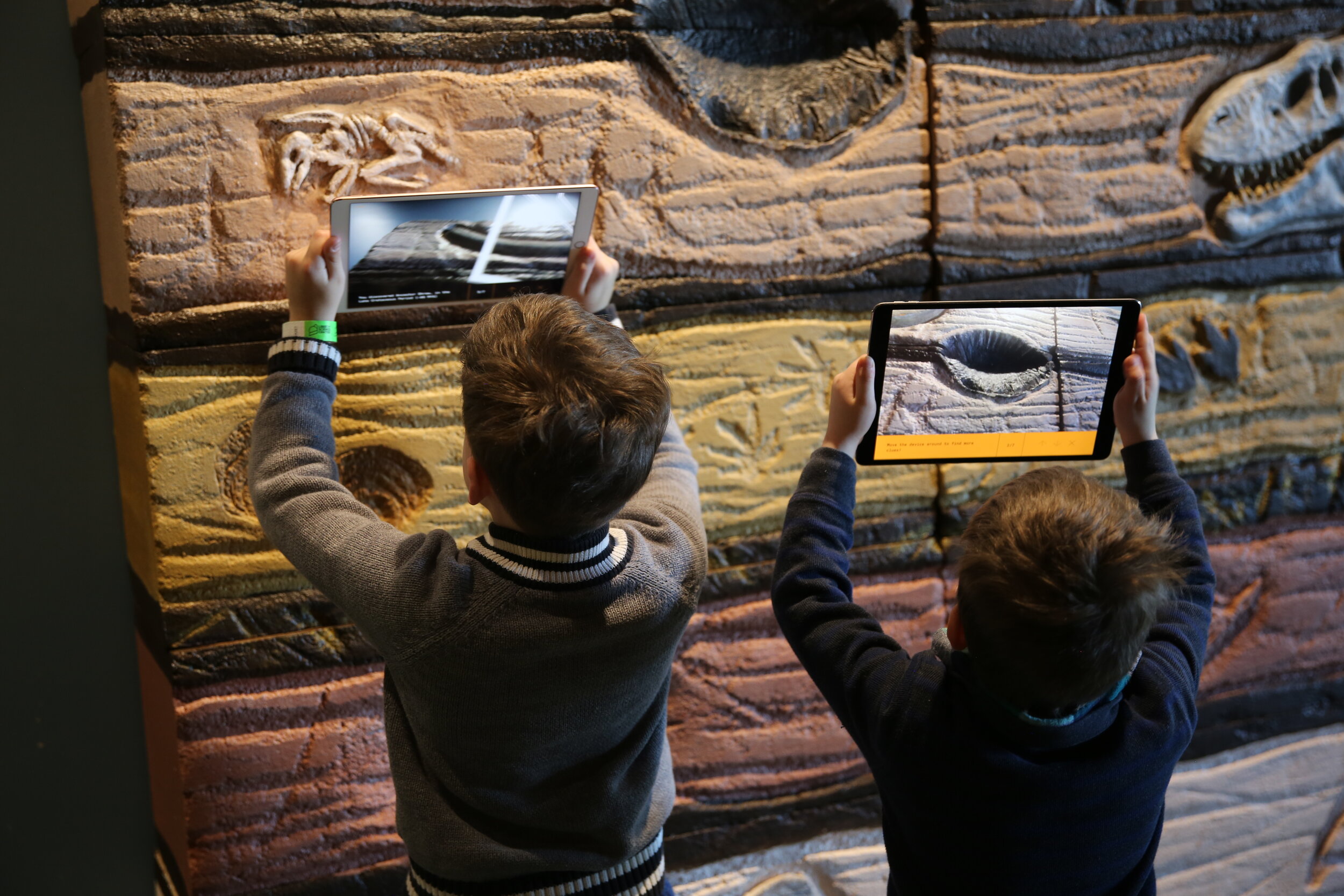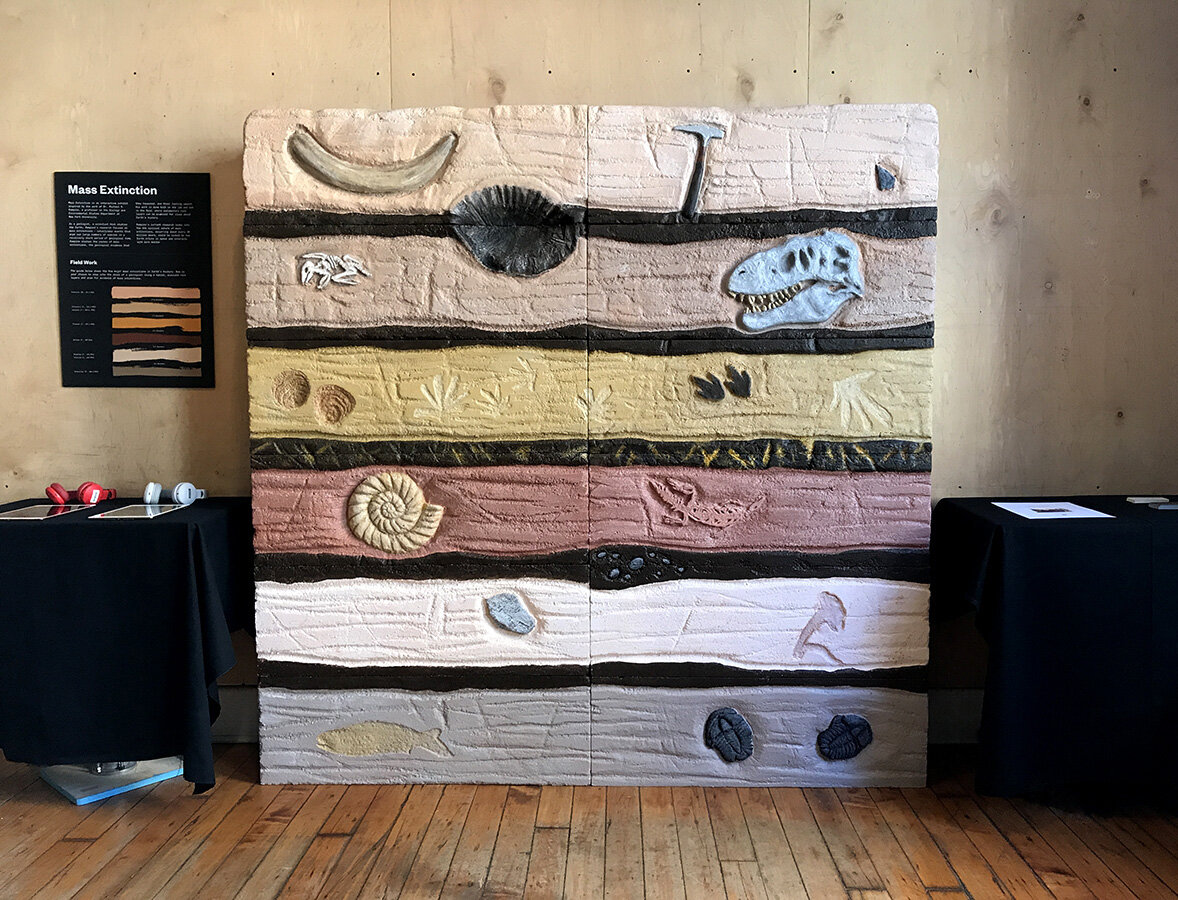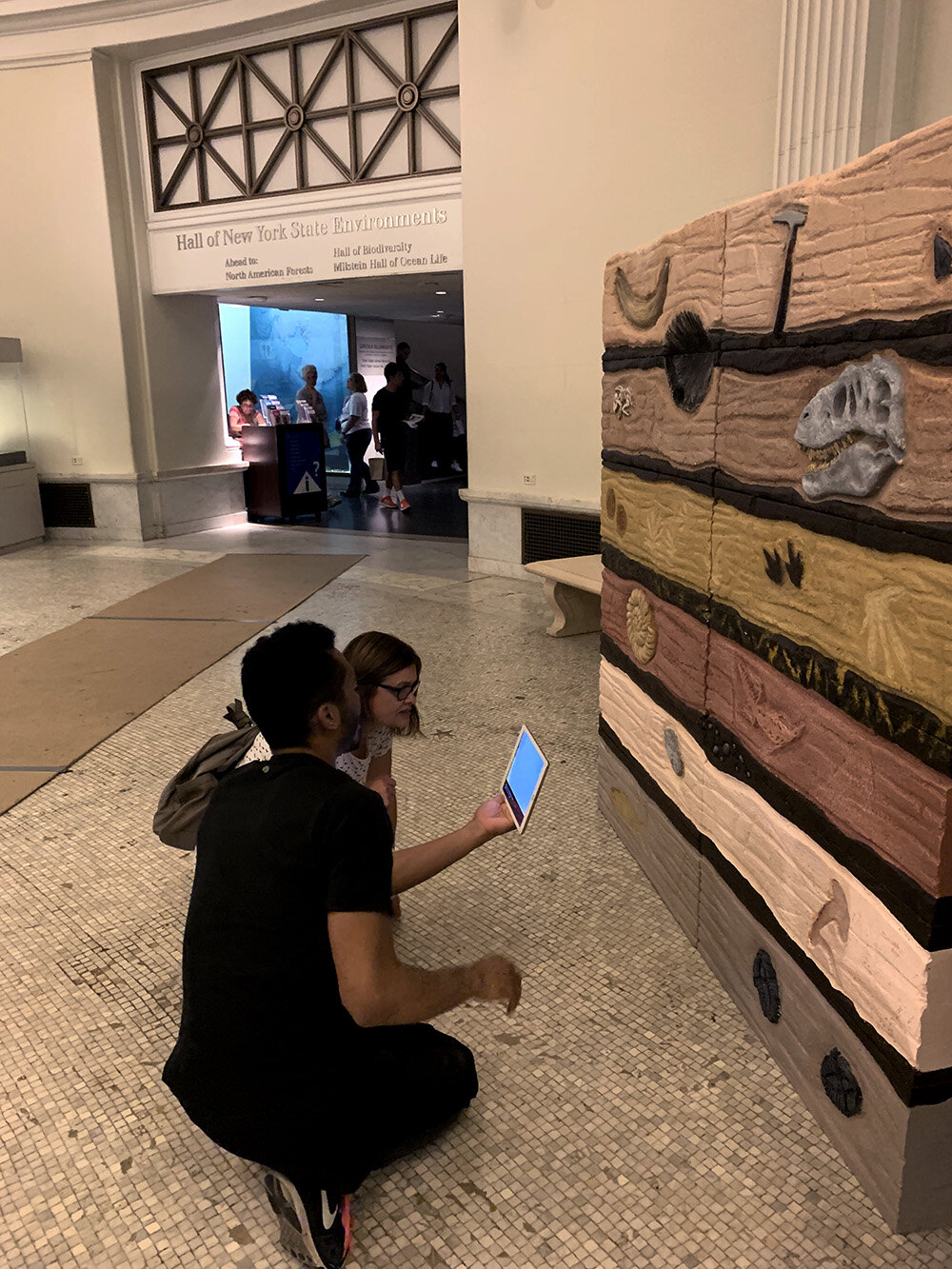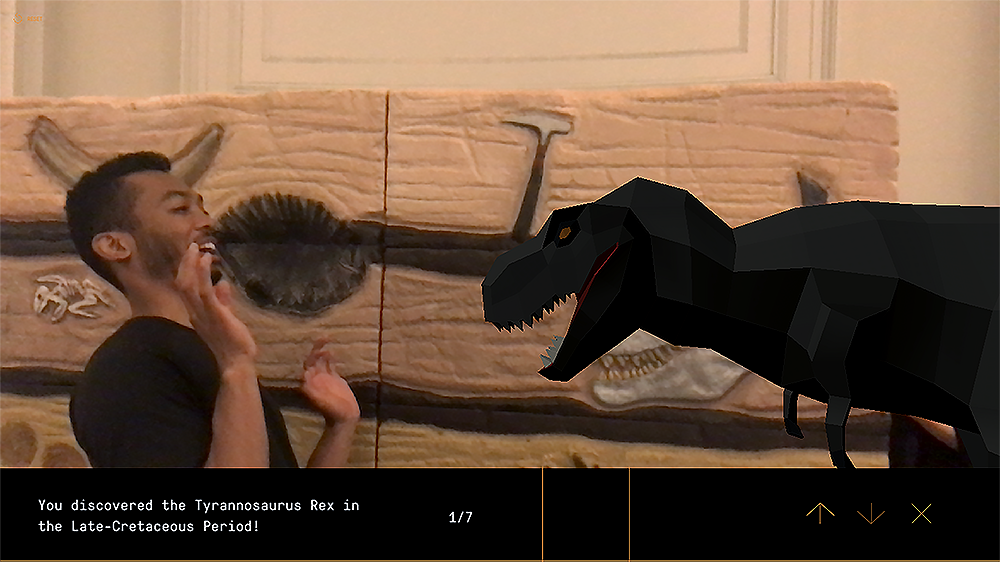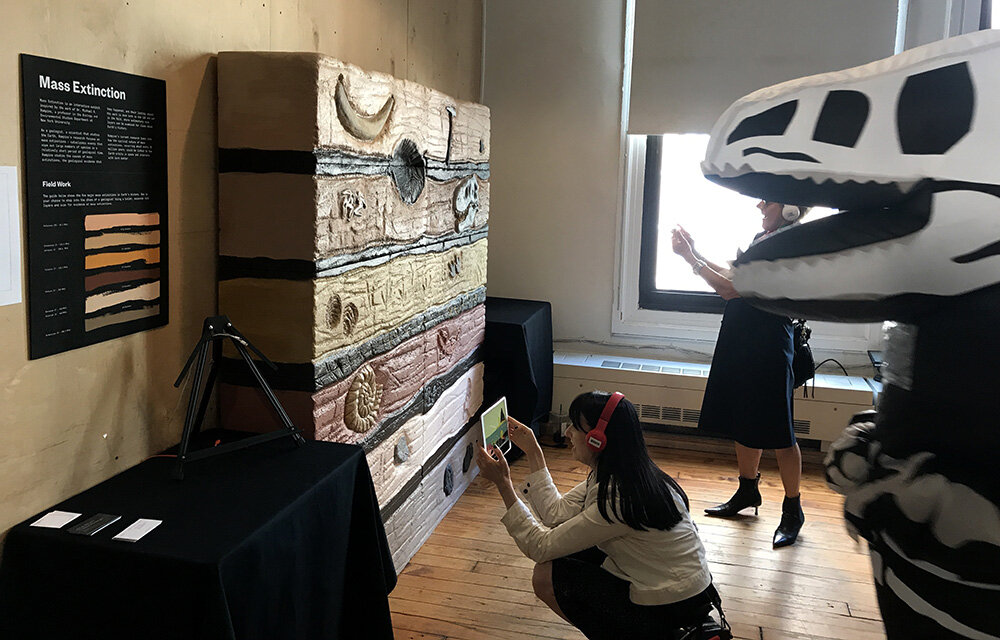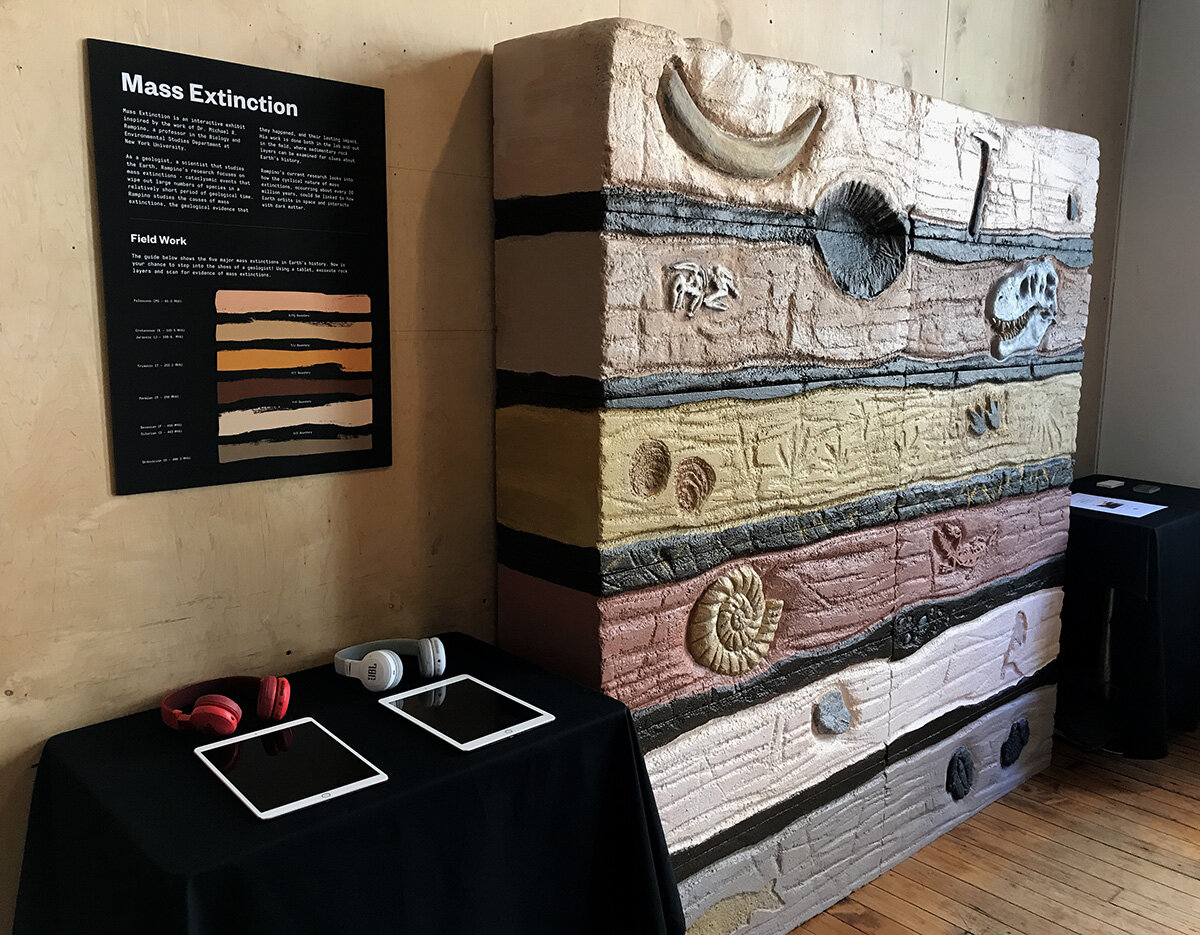MASS EXTINCTION
ROLE: Experience Designer, Fabrication Lead
TIMELINE: 14 weeks
SKILLS: Fabrication, UX Design, Unity, Illustrator, After Effects
TEAM: Dylan Dawkins, Mingna Li, Emily Lin, & Maya Pruitt
EXHIBITIONS: Liberty Science Center (Feb 2020), The American Museum of Natural History ( May 2019), ITP Spring Show ( May 2019)
Mass Extinction is an interactive geological rock wall and augmented reality application designed for a museum exhibition setting.
How do you bridge the gap between an academic scientific community and the general public?
BACKGROUND
For this project we collaborated with Dr. Michael R. Rampino, professor of Biology and Environmental Studies at New York University. He researches mass extinctions - cataclysmic events that wipe out large numbers of species in a relatively short period of geological time.
It was our goal to capture concepts of Dr. Rampino’s research and communicate them through a playful and accessible educational experience.
RESEARCH & IDEATION
We started by synthesizing key concepts of geology, Earth's history, the causes and impacts of mass extinctions, and the creatures that existed throughout time. Though generally a grim subject, we imagined ways users could interact with this information in whimsical and engaging ways.
Original concept drawing by Emily Lin
We decided on an interactive where users could step into the shoes of geologists doing field work. Using tablets as their tool, users can excavate the rock layers searching for AR object targets that serve as clues of mass extinction. When found, the targets trigger hidden AR content (3D models, animations, or diagrams) that delivers “bite-sized” fun facts from Dr. Rampino’s research.
User flow
System diagram
DEVELOPMENT
FABRICATION: CREATING AN IMMERSIVE EXPERIENCE
The rock wall was designed to draw viewers in. It’s 6’ x 6’ x 1’ scale emulates the physical presence of rock layers. Embedded objects were rendered with high detail to create a convincing spectacle as well as precise AR object tracking.
I hand carved all fossils and surface texture by hand out of expanded polystyrene foam. The wall was then covered with a plaster-like coating to give it a realistic rock texture. Bold paint colors were chosen for a playful and approachable feel.
Rock wall layout
Final rock wall sculpture & painting
AUGMENTED REALITY: USING TECH AS A WINDOW TO THE UNSEEN
The AR application was built with ARKit in Unity led by Dylan Dawkins. We choose AR as our main interactive medium as it fit the metaphor of geology research: the answers to our questions are not always obvious. AR magically reveals hidden microscopic evidence, stories of asteroids and volcanoes, and other information about the creatures that have perished from mass extinction.
Ancestry Tree AR content created by Maya Pruitt.
Visual graphics style designed by Emily Lin.
USER TESTING
MEANINGFUL FINDINGS
Though there are eighteen different objects embedded in the wall, only seven objects on the wall serve as object targets with linked AR content. This was done purposefully to heighten the experience of searching for clues of mass extinction.
However, in initial user tests, we noticed users would become disgruntled if it was not obvious that a target had been found.
We added two important UI features to the application to improve this:
A distinct color change to indicate the difference between “search” mode and “found” mode.
A total count that indicated how many clues had been found and how many were still left to find.
With these additions, it became more clear when to expect AR content to appear. Children especially loved keeping track of their found objects and started treating the experience as a quest to find them all!
FINAL PRODUCT
Full demo video
